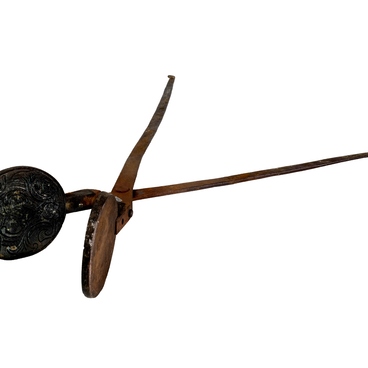The first backpacks were invented more than five thousand years ago. They allowed to free hands and equitably distribute weight, so it was easier to carry on a back than on a shoulder or in hands. In those days, people used animal skins to make such bags and fixed them on frames made of flexible rods. Gradually, primitive ancient bags were transformed into backpacks, woven baskets, boxes, and knapsacks of different kinds. They were popular among Europeans, Asians, and Americans. They were made of fabric, leather, birch bark, straw, willow twigs — the material differs depending on a location.
Wooden frames used for carrying heavy loads on a back appeared in Germany and France in the 18th century. The northern peoples of Russia also had similar bags. They were called “gorbusha” (consonant with Russian “gorb” — “hump”) and looked like usual backpacks, but their main part was made not of fabric, but wood. Cloth straps were attached to a gorbusha. They were quite wide and thick, so they would not twist or cut in the shoulders. Most often, such “shoulder frames” were used to carry fire wood and brushwood. The size of the load inside the backpack should not exceed the width of the shoulders. Otherwise, it would be too difficult to go through the taiga with it. The cargo in the gorbusha was not placed tightly to the back of a person but was at the sacrum level. Human center of gravity is located there. Thanks to this design, a man carrying such a bag was less tired.
The craftsman Vladimir Zykov made the gorbusha displayed at the collection of Nizhnevartovsk Museum of Local History in the period between the 1930s and 1950s. He made a quadrangular working part of wood and plywood and painted it gray. Tarpaulin loops are on the sidewalls. Fabric straps were passed through them. They are united into a wide fabric strip on the back, which was tightly fitted to a spine, and able to withstand a heavy weight. The bottom parts of the straps were padded with felt. Thick and soft material did not let a gorbusha to cut into the shoulders. The top part and one of the walls were sewed with tarpaulin and burlap, and attached with small nails.
Wooden frames used for carrying heavy loads on a back appeared in Germany and France in the 18th century. The northern peoples of Russia also had similar bags. They were called “gorbusha” (consonant with Russian “gorb” — “hump”) and looked like usual backpacks, but their main part was made not of fabric, but wood. Cloth straps were attached to a gorbusha. They were quite wide and thick, so they would not twist or cut in the shoulders. Most often, such “shoulder frames” were used to carry fire wood and brushwood. The size of the load inside the backpack should not exceed the width of the shoulders. Otherwise, it would be too difficult to go through the taiga with it. The cargo in the gorbusha was not placed tightly to the back of a person but was at the sacrum level. Human center of gravity is located there. Thanks to this design, a man carrying such a bag was less tired.
The craftsman Vladimir Zykov made the gorbusha displayed at the collection of Nizhnevartovsk Museum of Local History in the period between the 1930s and 1950s. He made a quadrangular working part of wood and plywood and painted it gray. Tarpaulin loops are on the sidewalls. Fabric straps were passed through them. They are united into a wide fabric strip on the back, which was tightly fitted to a spine, and able to withstand a heavy weight. The bottom parts of the straps were padded with felt. Thick and soft material did not let a gorbusha to cut into the shoulders. The top part and one of the walls were sewed with tarpaulin and burlap, and attached with small nails.



